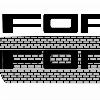that's actually not too big of a box. i was expecting bigger before i read the dimensions and saw the pics. i would love to try to do a 4th or 6th order bandpass for my 18's, but the trial and error that goes into it doesnt sit well with me lol since i'm not too familiar in designing them. it'd get expensive buying lots of wood

. the size for my 18's would be big as well. i dont mind building a wall, but i wanna keep my back seats. maybe i'll look for someone to help me with one sometime. that's a really good score off of 1 15" too. did you design that box yourself?
and to stay on topic lol, here's some nice information from digital designs website:
Efficiency is the easiest one word reason for choosing ported over a sealed box. Everything is better with a little efficiency sprinkled on it. Ask any motor builder what they would do to a motor if it were theirs and they'd say turbo charge it! What does turbo charging do for an engine? It raises the efficiency. Why not apply this same thing to your audio system. Making the most out of the air space you have for a subwoofer enclosure, is the first step in raising the efficiency of your system. This means that you will utilize this space in the most efficient manner possible.
Designing a ported a.k.a. vented enclosure will not only give you added output, but can give you more low-frequency extension. This means louder and lower! Since the speaker system is the least efficient part of the whole audio chain, would it not make sense to make it as efficient as possible? Of coarse it does.
MORE SOUND, BETTER BASS
(back to top)
This is why venting is basically free output, and free sound quality. Local shops tell you that a small sealed box is the best way to go? Hit up your local hi-end home audio store and find out how many of those $20,000.00 pairs of speakers are sealed designs. You won't find many. Think efficiency as you read up in the DD tutorial section, this will help you clear all of that smoke out of your eyes that most car audio manufacturers have been pumping all along.
HOW DOES A PORT WORK
(back to top)
Think of a box port not as a vent in the terms of a venting path for air to travel into and out of a box, but rather as extra cone area that is propagating acoustic energy from the enclosure to the cabin. The air in a port is fixed; it is trapped within the confines of the port walls. When the cone moves there is a corresponding change to the pressure in the box, that pressure change then causes the trapped air in the port to move either forward or backward. It moves as a solid unit, just like a speaker cone does. When you build a properly vented enclosure, its kind of like a two for one special! Since the port is essentially another woofer!










